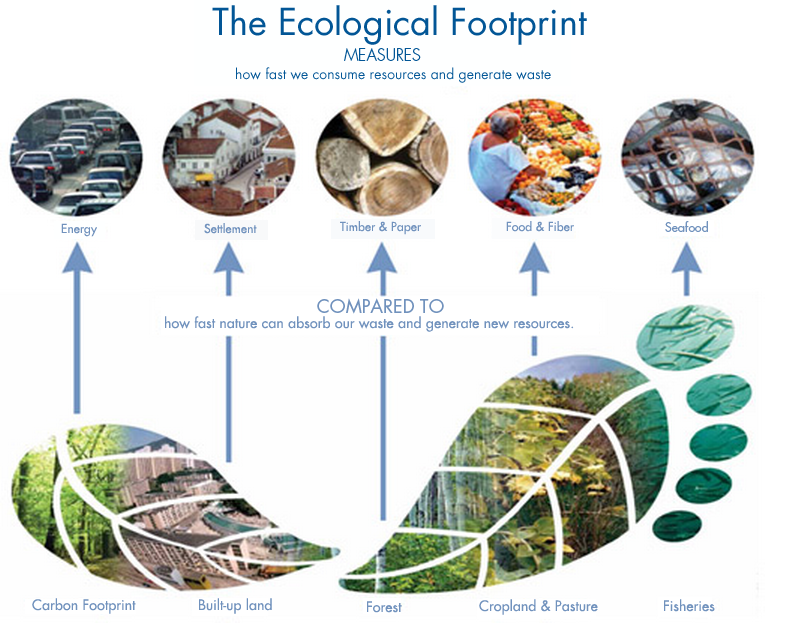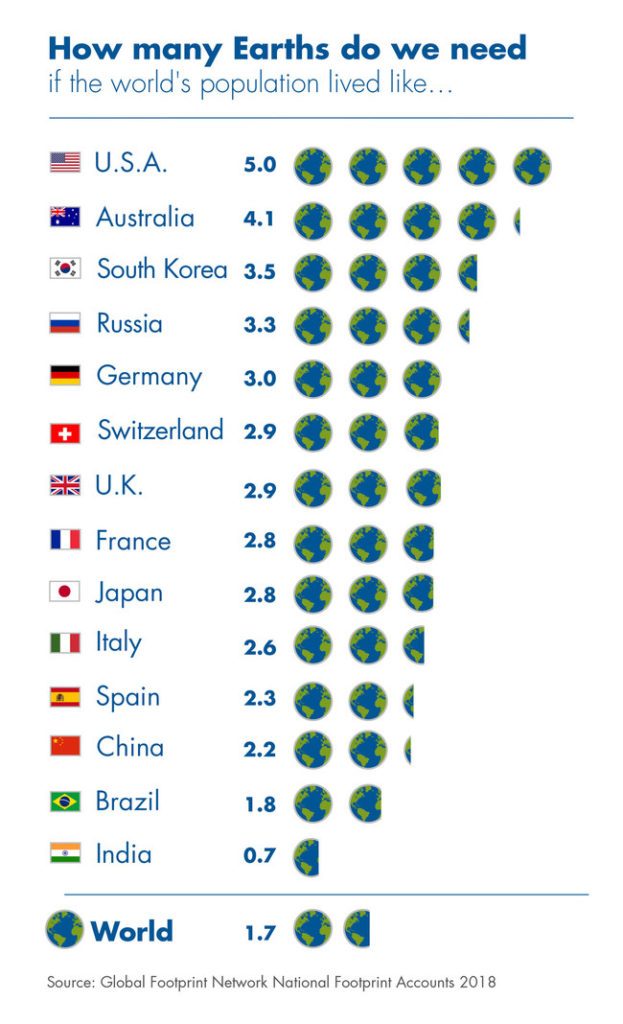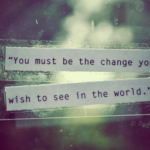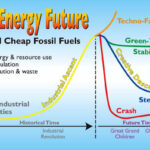
Biocapacity
The world has enough for everyone’s needs, but not everyone’s greed,” Mahatma Gandhi
Biocapacity is a concept known by several names: The carrying capacity of the Earth. Ecological footprint. Global footprint. They all refer to the total impact mankind has upon the planet and how much human life this one lovely planet can support.
Ecological footprint is the only metric that measures how much nature we have and how much nature we use. (Global Footprint Network n.d.)
Ecological footprint is an internationally recognized standard. It’s a way to talk about how much resources humans take from the earth versus how quickly the planet can make more. Also how much waste humans make and how quickly the planet can clean up the mess.
It measures all the “stuff” we have — all the forests, fisheries, arable land, mineral deposits. Scientists measure this “stuff” in bioproductive acres. The econolgical footprint calculation divides up the “stuff” by the number of people we have. This allows us to guage our fair share of earth’s resources.
bioproductive acres ÷ population = fair share
This fraction is where population comes in. As we increase the human population, it changes the fraction. The “stuff” has to be divided between more and more people.
Under normal conditions, bioproductive acres is somewhat finite. The Earth is not adding or subtracting significant amounts of molecules into outer space. That means as the world population increases, those bioproductive acres need to be divided further and further. We each get allocated less stuff. Our fair share decreases.
And, as we pollute our nest, we’re effectively decreasing bioproductive acres by rendering some unusable, unavailable. Our fair share decreases even further.
Another way to consider this is in terms of renewal. Humans take resources from the earth, and we make messes. Meanwhile the earth renews its resources, and it cleans up the mess. Sometimes this happens rapidly. We call those “renewable resources,” like growing pine trees for lumber or composting kitchen waste. Other times the earth’s renewal process is very, very slow, such as making more oil or cleaning up a nuclear meltdown.
Ecological footprint also measures how quickly the earth makes more “stuff” (and cleans up messes) versus how quickly humanity consumes those resources. Right now humans use far more resources, faster, than the earth can make more. This is the concept of global ecological overshoot.
Take the amount of resources the planet can make in a year — in 2019-2020, humanity consumed that much in 8.5 months. (Global Footprint Network 2020. Note these are pre-pandemic statistics.)
Stated differently: in 2020 humanity as a whole consumed 1.6 planets worth of “stuff.”
Obviously, we don’t have 1.6 planets. We have just one. We’ve got to figure out how to live on what our one small planet can produce.
It gets even worse when we look at it by country.

Look around you right now. All the consumer goods, the fashions, the building materials, packing materials. All the cars, trucks, freeways. All the airplanes, and travel around the globe. All the imports, all the long distance food. Here in Los Angeles, the imported water. The list goes on.
If everyone on the planet lived the way we do in the U.S. — the way we tell each other is “normal” — it would take five planets to provide for it all.
Sit with that a moment: Five planets worth of consumption.
But we have only one small planet that we all must share. Five planets worth of consumption is not “normal,” no matter how much advertising and social messaging might try to convince us. Within the realities of nature and this planet, this is not normal.
Now wait a minute, you’re saying, how is this possible? How is it possible for some nations to consume more than one planet’s worth?
- taking from other nations
- taking from the past
- taking from the future (Giangrande & Banks, 2008)
The first way is by taking from other nations. Imports. Taking raw materials, which rightfully belong to the fair share of the nation where they originated.
The second way is by taking from the past. Mineral deposits, created by geological processes which don’t renew, such as those elements that were created when the planet was formed. Also, fossil fuels — oil, gas, coal. How does the planet create these? First of all, very very slowly. Long ago plant material, biological material, compressed beneath layers of sediment for millions of years. One author referred to these as a reservoir of “ancient sunlight” — at one point those plants captured energy that came from the sun.
A third way is by taking from the future. Depleting forest cover. Depleting fisheries. Polluting land and water and rendering them unusable for future generations. You’ve undoubtedly heard the activists’ cry “we’re consuming our children’s future.”
Our one small planet is not growing. It’s not gaining molecules. And we’re not gaining additional planets, despite our desire to consume more, more, more.
All we have is on this one small planet. That means we need to live within our fair share. As we imagine the future we need to design with this in mind.
Reflection – Biocapacity
Calculate your own ecological footprint
• Global Footprint Network. (n.d.). What is Your Ecological Footprint. Footprint Calculator. https://www.footprintcalculator.org/
This post is part of the What We Can Do series — see the full project.
You might also like:

Understand Peak



